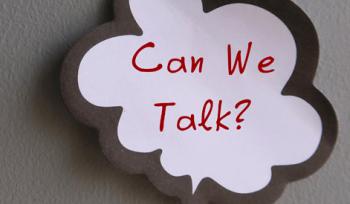Language is powerful. It can shape workplace dynamics, particularly during difficult conversations that make or break team cohesion. Words can build bridges or walls, influencing not just the outcome of specific interactions but the overall culture of an organization.
In professional settings, where trust and a sense of belonging are the bedrock of productivity and innovation, carefully selecting words can foster a supportive environment or contribute to feelings of isolation. Understanding this delicate balance is essential for anyone looking to lead, collaborate, and thrive.
Enter mindful communication—a balanced approach emphasizing awareness and intentionality in our interactions without veering into hypersensitivity or rigid dogmatism. This nuanced form of communication invites us to consider what we say and how we say it, recognizing that every word and phrase carries weight. This article explores several concepts of mindful communication so that our messages are understood in the spirit they were intended.
What You Say Matters
When it comes to being more mindful in our communication, a good place to start is by paying attention to the effectiveness of the words we use. Words can greatly impact the dynamics and outcomes of interactions—some are more effective than others at helping us communicate clearly and inclusively.
Effective words act as clarity enhancers. They are the tools that help reduce ambiguity so all team members have a shared understanding of tasks, goals, and expectations. Precision in language is crucial in complex or fast-paced environments where misinterpretation can lead to costly mistakes or delays. Moreover, words that promote a sense of unity are invaluable in fostering a sense of belonging and respect among teams. These words acknowledge contributions, encourage inclusivity, and celebrate team achievements, ultimately enhancing cohesion and morale.
Conversely, non-effective words can undermine workplace harmony and productivity. Divisive language, whether intentional or not, can create rifts between colleagues, bringing about feelings of exclusion or bias. These terms can detract from the collective goal of unity and shared success.
Similarly, confusion-makers—vague words with multiple interpretations—can be just as detrimental. They sow seeds of uncertainty, as team members may find themselves working based on assumptions that diverge from the intended direction or outcome.
The Center for Equity, Gender and Leadership at the Haas School of Business has developed several guides on mindful communication highlighting the adoption of more inclusive language. In their language glossary, they list four guiding principles that define inclusive language:
- Conveys respect to all people
- Communicates a message effectively through precise language
- Acknowledges diversity
- Involves continual improvement (1)
Being mindful of our words and language can increase the effectiveness of our communication and bridge divides—whether racial, gender, cultural, or any other. These mindful communication strategies are essential for fostering an environment where clarity, unity, and mutual respect prevail.
The Language Playbook
From casual encounters to heartfelt family conversations to critical workplace interactions, effective communication is less about rigid rules to be followed and more about the art of connection and expression.
That said, even the best communicators use specific principles to help them make the most of their words. The following guide offers insights and strategies not to constrain but to inspire the creation of more effective, universally resonant communication.
For Individuals
- Bilateral Communication: Recognize the importance of dialogue. Communication should be a two-way street where listening is as crucial as speaking. This approach fosters mutual understanding and respect.
- Self-Reflection Over Judgement: Focus on refining your communication style rather than critiquing how others express themselves. This introspective approach can lead to more effective and respectful interactions.
- Inclusive Communication Practices: Use strategies that ensure all team members feel valued and heard. This can include using inclusive language and encouraging participation from everyone.
- The Power of Inquiry: Embrace asking questions to gain deeper understanding and clarify misconceptions. Thoughtful inquiries can open the door to meaningful conversations and insights.
For Organizations
- Linguistic Diversity Policies: Develop and implement policies that respect and celebrate linguistic differences among employees. This can help ensure all team members feel welcome.
- Evolving Language: Commit to regularly revisiting and updating the organization's language use to stay aligned with changing norms and terminologies. This ensures that communication remains relevant and respectful.
- Seeking Clarification: Encourage asking for more information to provide opportunities for corrective action in a non-confrontational manner. This can prevent misunderstandings and foster a culture of open communication.
- Impact Awareness: Teach the importance of distinguishing between intent and impact. This awareness allows for constructive feedback and personal growth, acknowledging that words can have unintended effects.
- Commitment to Learning: Establish a culture of continuous education on effective communication practices. Emphasize the benefits of workshops, training sessions, and other learning opportunities to enhance communication skills across the organization.
The journey to mindful communication underscores its pivotal role in fostering a harmonious and productive workplace. By embracing clarity enhancers, unity promoters, and steering clear of divisive language and confusion-makers, we pave the way for more inclusive and effective interactions among team members. Such dedication not only enriches the work environment but also strengthens our professional relationships.
References
- Inclusive Terms Glossary, Berkeley Haas Center for Equity Gender & Leadership
- Language Playbook, Berkeley Haas Center for Equity Gender & Leadership
- Guide for having difficult discussions about race and identity, Berkeley Haas Center for Equity Gender & Leadership



